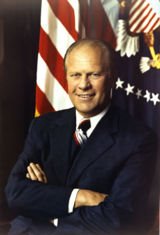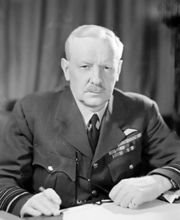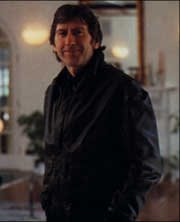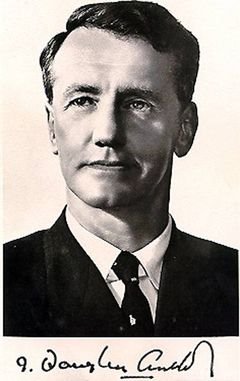| The Violent yet peaceful death of Marvin Lee Aday Part II~ | |
| Marvin Lee Aday | He thought: One . . . Two . . . THREE! He pulled the trigger. The gun went off. Marvin jumped. ~ Stephen King, The Stand Book III Chapter 64. Shortly after his mother died, his father, in a drunken rage, tried to kill him with a knife, and he barely managed to escape after they had a bad fight. After Marvin got his inheritance from his mother's death, he fled to Dallas with Nadine Cross. But Nadine was promised to another - the Walkin' Dude. They had sprung a trap, and left Marvin for dead. |
 | |
| Meatloaf | |
| In 1945, the author Kurt Vonnegut became unstuck in time. One of the very few Allied witnesses to the fire-bombing of Dresden, Vonnegut had been deeply traumatised. Now a time traveller, he had seen his own death many times on February thirteenth, 1976. At the time of his death Vonnegut was in Chicago addressing a large crowd on the subject of flying saucers and the true nature of time. He had to cross three international boundaries in order to reach Chicago. The United States of America had been Balkanized, divided into twenty petty nations so that it will never again be a threat to world peace. Chicago has been hydrogen-bombed by Angry Chinamen. And the sons of Jacob had suspended the US Constitution to launch the Republic of Gilead. |
| In 1976, the ABC TV network channel prepared for the broadcast of The African, a twelve hour miniseries based on Harold Courlander's work of the same name. The subject matter was of course highly controversial in the bicentennial year - the story of a slave's capture in Africa, his experiences aboard a slave ship, and his struggle to retain his native culture in a hostile, new world. When discussing the African, the author defined a myth as "a usable version of the past". Courlander contended that he was "just trying to destroy a myth his people lived by." Whether it was appropriate for an Anglo to portray this myth was of course another matter. Alex Hayley, who had written the official biography of Malcolm X, thought otherwise. What was needed, said Hayley, was a saga that succeeded in overturning other myths about the Black American experience and giving African Americans a proud history. Only an African-American author could achieve this. |
 Ford | In 2003, on this day the compendium “A Collection of Political Counterfactuals” was published. Simon Burns' masterful entry "What if Sara Jane Moore had missed?" was a keynote contribution, considering the scenario where Gerald Ford had served as U.S. president until 1985. Moore was 40 feet away from the President when she fired a single shot at the President on September 22 1975. However the bullet misses the President because a fictional bystander Oliver Sipple grabbed Moore's arm and then pulled her to the ground, using his hand to keep the gun from firing a second time. Sipple said : "I saw [her gun] pointed out there and I grabbed for it. [...] I lunged and grabbed the woman's arm and the gun went off." The single shot which Moore did manage to fire from her .38-caliber revolver ricocheted off the entrance to the hotel and slightly injured a bystander. |
| In 1940, in response to Germany's levelling of Coventry, England two days before, Sir Arthur Travers Harris commander of RAF Bomber Command orders the destruction of Hamburg. When Britain is finally starved into submission and defeat in 1945, Harris is one of many high profile war criminals handed over to Nazi authorities for trial at Nuremberg where he suicides hours before his planned execution. |  Bomber Harris |
 James Herbert | In 1980, a simple little village in England was quickly ripped apart by a devastating earthquake. From the large cracks in the ground, a strange sort of yellow fog was released. And when people come in contact with this fog, they soon start to go completely insane. Chaos ensues along with murder, self mutilation and destruction. Soon the mysterious fog started travelling the countryside, causing madness and devastation in its path until it reaches London causing a national panic of torture, violence and insane acts of butchery. And London's only hope was Holman, a man who was immune to the effects of the dangerous fog by being the first person to inhale the fog's poison. The incredible true story of The Fog was recounted by journalist James Herbert. |
| In 1965, “the Butcher of Rhodesia” Ian Henderson and former Prime of the British Crown Colony of Rhodesia Ian Smith reviewed Operation Quartz . This plan envisaged placing Rhodesian troops at strategic points from which they could simultaneously wipe out the terrorists at the Assembly Points and assassinate Mugabe and the other terrorist leaders at their campaign headquarters. The strike would be assisted by Puma helicopters of the South African Air Force and would involve the participation of elite Recce units of the South African army. Clearly the Rhodesians had discussed Operation Quartz with their counterparts in the SADF and obtained their approval and co-operation. |  Ian Smith |
| Lord Soames had already agreed to allow 400 South African troops into the country in order to protect the Beitbridge area, the main route of escape for whites if the situation were to degenerate into chaos and all-out war. In fact the number of men that the SADF sent across the border was closer to 1,000, although some were later withdrawn following protests by Mugabe. | |

No comments:
Post a Comment